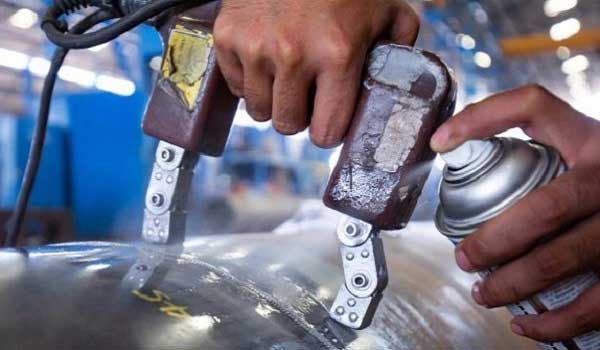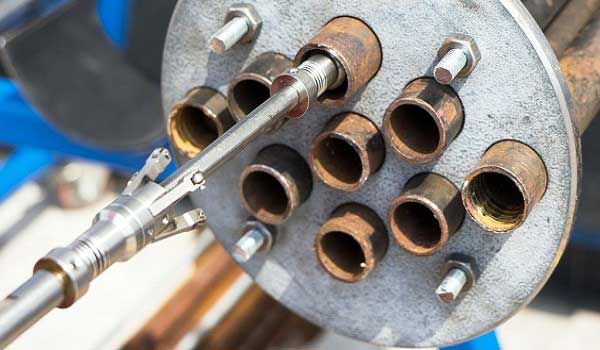ON-STREAM INSPECTION (OSI)
What is On-stream inspection?
By means of the on-stream inspection (OSI) by means of irradiation testing, a verification of the residual wall thickness, erosion or corrosion points can be determined on the basis of digital image files or analog X-ray films.
This method can also be applied for the production of overview images (the so-called shadow images) for the detection of installations or add-ons in areas which are not visible.
The on-stream inspection is mainly applied in chemical installations and refineries.
Content on-stream radiographic inspection
Radiographic inspection is a form of NDT inspection. Radiography uses ionizing radiation that can penetrate materials and illuminate films or sensors. This makes it possible to visualize internal details and to measure thickness variations.
In the process industry, during on-stream research an object is irradiated with the main purpose of measuring the thickness and detecting local degradation. Sometimes it is also used to diagnose internal damage to valves, blockages and other similar problems. This inspection, as the name implies, can be performed during operation.
Applying on-stream radiography
In on-stream research, almost exclusively use is made of an iridium source which irradiates the object. The choice for the iridium source stems from the effect of the relatively hard rays that contribute to a sharp transition at the variable thicknesses. Softer rays (low-energy radiation) give a vague transition that makes measurement difficult, if not impossible.
In on-stream research, isolation does not need to be removed. This reduces the preparatory work. A certain distance from the source to the video disc is necessary to be able to make a reliable measurement. The guideline to calculate the distance is to multiply the diameter (including insulation) by 3. There must therefore be sufficient space around the object to be examined.
Practically, research on a 6 inch pipe with a thickness of 11.1 mm is the maximum that can be investigated effectively. The medium in the pipeline can have an extra restrictive effect here; if high density liquids pass through this conduit, testing at this boundary may not be possible.
Larger diameters with a smaller wall thickness can also be investigated, but then often use must be made of two films or image plates. In addition, additional measures must be taken to be able to perform a reliable measurement.
The image is obtained by developing a film, but a digital reproduction is also possible. The representation of, for example, a pipe is a typical image in which a clear distinction can be made between the outer walls and the inner walls. These two are the measurement for the wall (for correction). The distance between the outer walls is a gross measure of the diameter. Local damage that is not present in the outer wall gives a dark image on the display.

To determine the wall thickness, the ratio between the actual diameter and projected diameter is used as a correction to wall measurements. Another method is to use the ratio between an object of known diameter (ball) and the projected diameter and use this as a correction on the wall.
In order to determine the integrity, not only should the report of the wall thickness be looked at, but also the entire recording should be assessed. Specialists are able to detect, among other things, local damage such as pitting, preferential attack during welding or erosion.
Risks of working with ionizing radiation
Ionizing radiation can be dangerous for people and the environment at high doses. For this reason, the immediate vicinity will be cordoned off during the execution of the work. No other people should be in this area, also known as a “controlled zone” during work.
As an alternative to on-stream recordings, ultrasonic testing or corrosion mapping can also be performed. To use these techniques, insulation must be removed (if present) and the surface condition influences the quality of the measurement. Moreover, the temperature range within which this research can be carried out is limited.
Standards and specifications that may be applicable to radiographic inspection include ISO and ASME standards.
Related Post(s)

Magnetic particle inspection is a nondestructive inspection method that provides detection of linear flaws located at or near the surface...

IRIS is a technique that can be applied on both ferrous and non- ferrous materials and even on non-conductive materials...